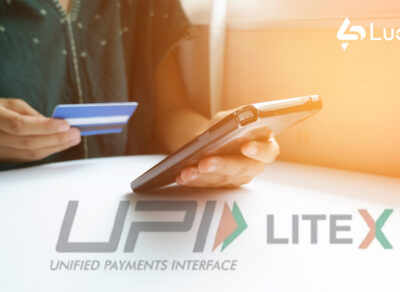Understanding UPI Switching Services: How They’re Shaping the Future of Digital Payments

India has witnessed a seismic shift in the way payments are made, thanks to the Unified Payments Interface (UPI). As UPI continues to break records with billions of monthly transactions, an underlying infrastructure, known as UPI Switching Services, quietly powers this revolution. But what are UPI Switching Services, and how are they shaping the future of digital payments in India? Let’s unravel this intriguing yet lesser-known aspect of UPI.
What Are UPI Switching Services?
At its core, UPI Switching Services act as the backbone of the UPI ecosystem, ensuring seamless and secure payment transactions between banks, payment service providers (PSPs), and users.
Here’s how it works:
1. Routing Transactions: When a user initiates a UPI transaction, the switching service routes the request to the relevant bank or payment system.
2. Interoperability Management: UPI Switching Services ensure interoperability between different banks and apps, allowing users to transact across platforms.
3. Real-time Processing: With UPI’s promise of instant payments, switching services facilitate real-time validation and execution of transactions.
Think of it as the control room ensuring that every UPI transaction reaches the right destination without a hitch.
The Role of UPI Switching Services in Transforming Payment Systems
1. Enabling Scalability
With over 10 billion UPI transactions processed monthly, scalability is paramount. UPI Switching Services handle the massive volume with ease, ensuring the infrastructure can meet increasing demand without delays or downtime.
2. Ensuring Seamless Interoperability
A hallmark of UPI is its ability to connect users across different banks and apps. Switching services enable this by ensuring that requests initiated on one platform are compatible with the recipient’s bank or PSP.
3. Enhancing Security
UPI Switching Services employ robust encryption protocols and authentication mechanisms to safeguard transactions. Every request is validated to prevent fraud or unauthorized access, ensuring user confidence in the system.
4. Reducing Transaction Failures
Switching services monitor network congestion and reroute transactions through alternative pathways if required, reducing the likelihood of transaction failures.
5. Facilitating Innovation
By providing a reliable backbone, UPI Switching Services empower banks and PSPs to innovate on the front end—whether it’s QR code payments, voice-activated transactions, or recurring mandates.
How Are UPI Switching Services Shaping the Future of Digital Payments in India?
1. Enabling Micro and Macro Transactions
From splitting a coffee bill to transferring large sums, UPI Switching Services make transactions of all sizes possible. This inclusivity fuels UPI’s universal appeal, bridging the gap between digital natives and first-time users.
2. Catalyzing Financial Inclusion
With a growing number of regional banks and rural users joining the UPI network, switching services play a critical role in making digital payments accessible to all. This fosters financial inclusion, particularly in India’s underserved regions.
3. Supporting Cross-border Payments
India is exploring UPI’s expansion into cross-border transactions, and switching services will be pivotal in ensuring smooth interoperability between domestic and international payment systems.
4. Empowering Businesses
For businesses, UPI Switching Services streamline payment collection and reconciliation. With faster settlements and lower transaction costs, businesses can focus more on growth and customer satisfaction.
5. Enabling the Subscription Economy
The rise of UPI AutoPay for recurring payments is another example of switching services enabling seamless user experiences, powering the subscription-based economy.
Key Players Behind UPI Switching Services
The National Payments Corporation of India (NPCI), the architect of UPI, oversees switching services to ensure the ecosystem operates smoothly. Additionally, participating banks and PSPs integrate with this system to provide end-to-end transaction support.
Challenges Facing UPI Switching Services
Despite their efficiency, UPI Switching Services face a few challenges:
1. Increasing Load: As UPI adoption grows, the infrastructure must continuously scale to handle rising volumes.
2. System Outages: Even minor outages in switching services can disrupt millions of transactions, underscoring the need for resilience.
3. Security Threats: With the rise of cybercrime, switching services must stay ahead with cutting-edge security measures.
4. Cross-border Integration: Expanding UPI beyond India requires aligning with international payment standards, which adds complexity.
The Road Ahead
As India embraces digital payments, UPI Switching Services will play an increasingly vital role in shaping the ecosystem. The future looks promising, with several developments on the horizon:
1. AI-driven Optimization: Leveraging artificial intelligence to predict transaction spikes and optimize routing will enhance efficiency.
2. Cross-border Expansion: NPCI’s efforts to integrate UPI with global payment systems could redefine international remittances.
3. Blockchain Integration: Incorporating blockchain could further enhance the security and transparency of switching services.
4. Decentralized Switching Models: Exploring decentralized approaches to switching services could reduce single points of failure and improve reliability.
Conclusion
UPI Switching Services are the unsung heroes of India’s digital payment revolution, ensuring every transaction is fast, secure, and seamless. As they evolve, they’re not only transforming how Indians transact but also setting benchmarks for digital payment systems worldwide.
The next time you enjoy the ease of a UPI payment, take a moment to appreciate the robust switching infrastructure that makes it possible. Because in the world of payments, smooth is the new fast!



